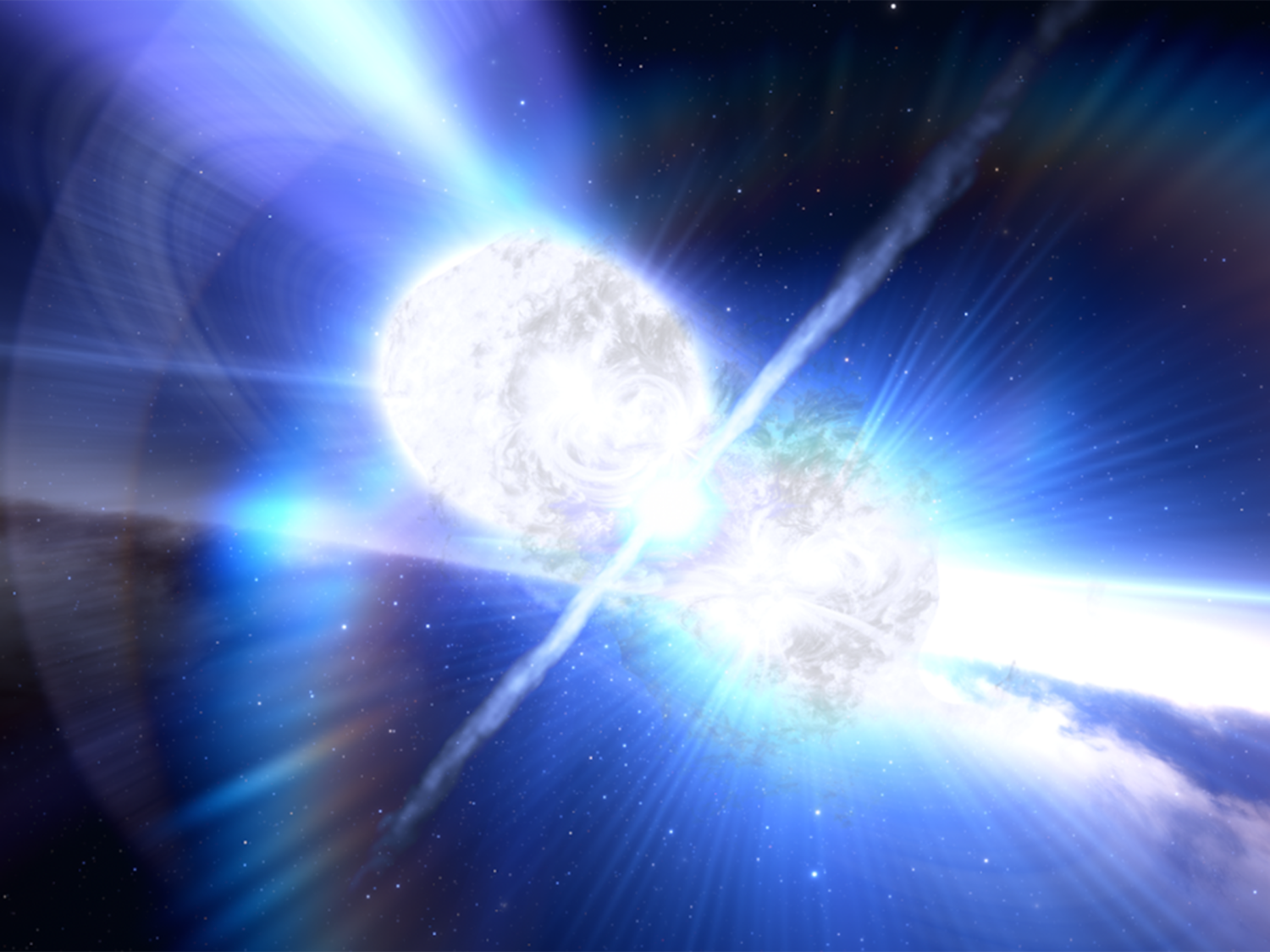Reviewed by Alex SmithDec 8 2022
A burst of high-energy light from a galaxy roughly 1 billion light-years away was discovered on December 11th, 2021, by NASA’s Neil Gehrels Swift Observatory, which has its Mission Operations Center at Penn State.
 While studying the aftermath of a long gamma-ray burst (GRB), two independent teams of astronomers using a host of telescopes in space and on Earth, including the Gemini North telescope on Hawai'i and the Gemini South telescope in Chile, have uncovered the unexpected hallmarks of a kilonova, the colossal explosion triggered by colliding neutron stars. Image Credit: NOIRLab/NSF/AURA/J. da Silva/Spaceengine
While studying the aftermath of a long gamma-ray burst (GRB), two independent teams of astronomers using a host of telescopes in space and on Earth, including the Gemini North telescope on Hawai'i and the Gemini South telescope in Chile, have uncovered the unexpected hallmarks of a kilonova, the colossal explosion triggered by colliding neutron stars. Image Credit: NOIRLab/NSF/AURA/J. da Silva/Spaceengine
The occurrence, which was also picked up by the Fermi Gamma-ray Space Telescope, calls into question what was previously believed to be an established understanding of gamma-ray bursts (GRBs), the most energetic explosions in the universe.
It was something we had never seen before. We knew it wasn’t associated with a supernova, the death of a massive star, because it was too close. It was a completely different kind of optical signal, one that we associate with a kilonova, the explosion triggered by colliding neutron stars.
Simone Dichiara, Assistant Research Professor, Astronomy and Astrophysics, Penn State University
As a result of the Swift team’s quick identification of the explosion’s location in the constellation Boötes, other facilities were able to respond with follow-up observations. According to a NASA announcement, their observations have given the earliest look at the early stages of a kilonova. Their study was released in the journal Nature on December 7th, 2022.
There are two types of gamma-ray bursts: long and short. Long GRBs, which last a few seconds to a minute, were previously thought to form when a supermassive star explodes as a supernova.
Before, it was believed that short GRBs, which last less than two seconds, only happened when two compact objects—such as two neutron stars or a neutron star and a black hole—met and produced a kilonova.
The discovery that a kilonova could cause a long gamma-ray burst challenges the conventional wisdom about cosmic explosions, which has held for many years that long GRBs are solely the result of the death of massive stars. According to the discovery, not all long GRBs are created by supernovae; some are created by the collision of neutron stars.
This event was a game-changer that showed to us how our well-established knowledge of the universe was in fact only a partial and incomplete view. This result was hard to digest at first and we spent months trying to figure out alternative explanations, but in the end, this is the only one that works well. Although we have been studying GRBs for decades, it is awesome to see how the universe can surprise us in the most unexpected ways.
Eleonora Troja, Study Lead Author and Astronomer, University of Rome Tor Vergata
The work was funded by the National Science Foundation and the European Research Council through the Consolidator grant BHianca.
Journal Reference:
Troja, E., et al. (2022) A nearby long gamma-ray burst from a merger of compact objects. Nature. doi:10.1038/s41586-022-05327-3.